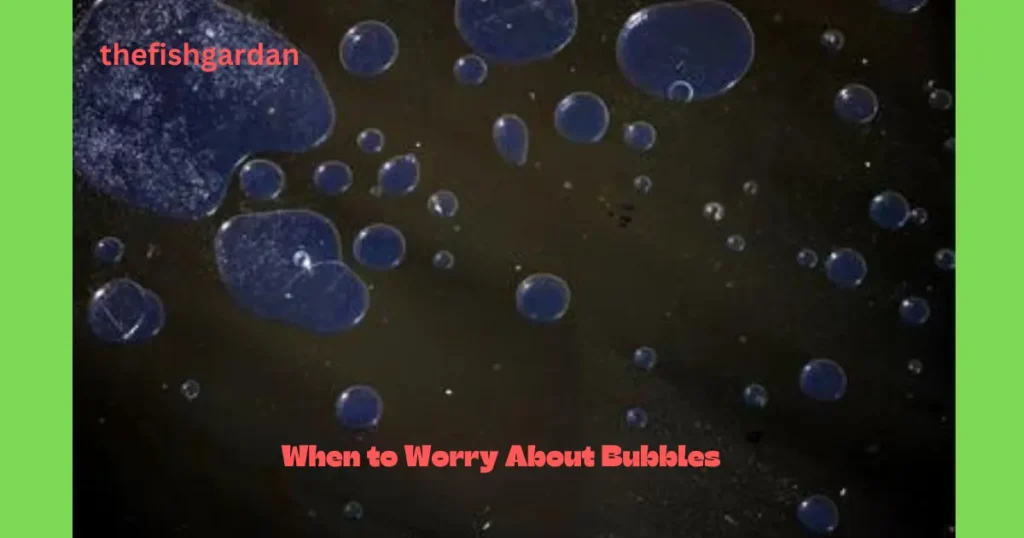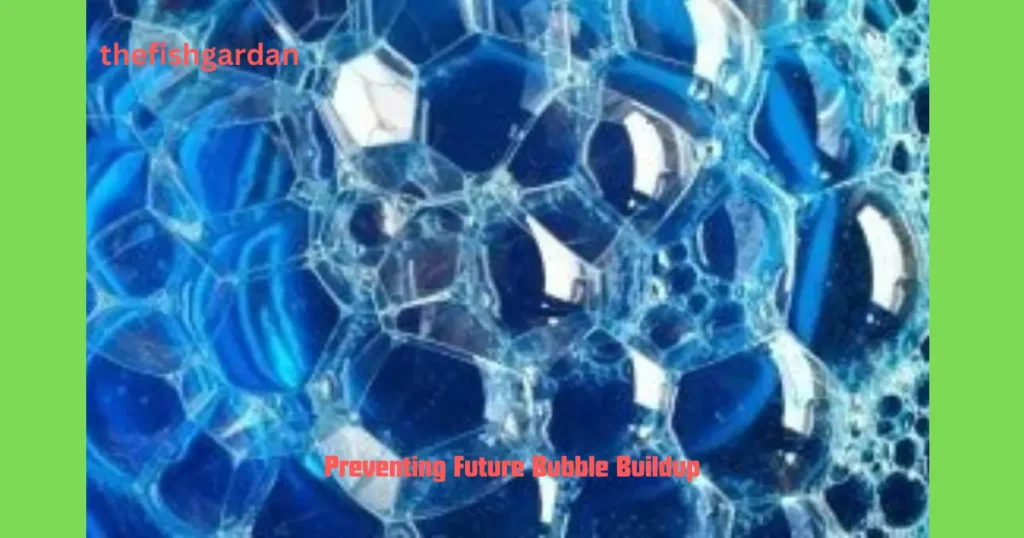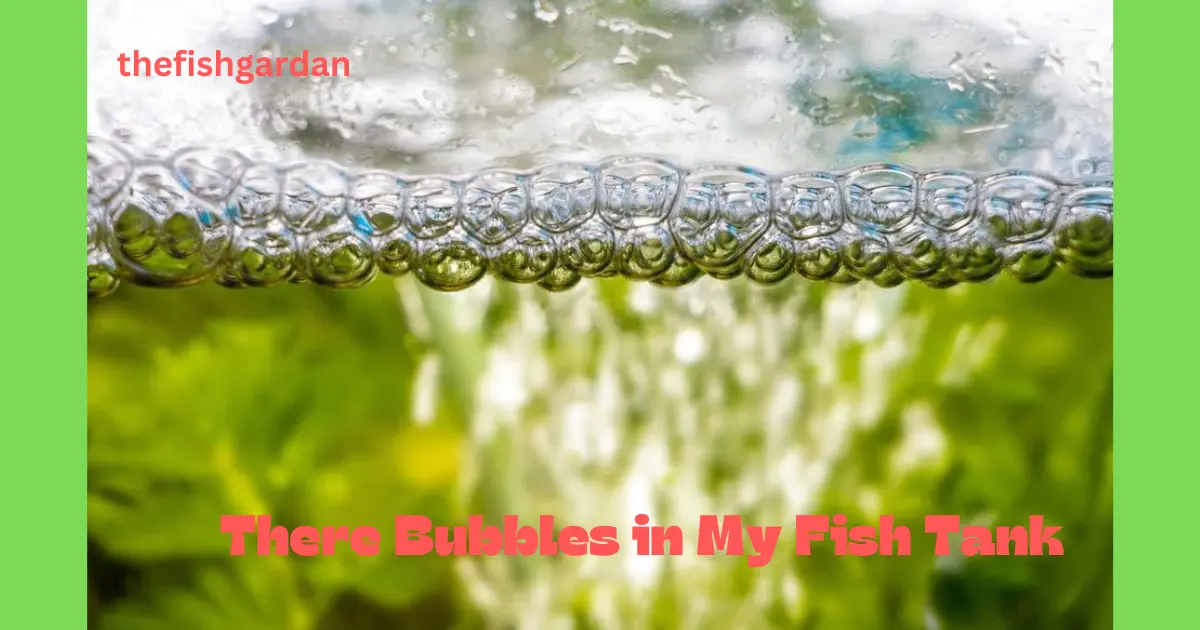Bubbles in your aquarium can be a perfectly normal part of maintaining a healthy environment for your fish. However, sometimes bubbles can also indicate problems with water quality or equipment. Understanding the various causes of bubbles, how to tell if they are problematic, and steps you can take to fix bubble issues will help you keep your tank clean and your fish happy.
What Causes Bubbles in a Fish Tank
There are several normal and safe causes of bubbles in fish tanks:
Oxygenation from Filters and Pumps
Most fish tanks use a filter system and water pump to circulate water and keep it clean. As a byproduct of this water movement, oxygen gets mixed in and released as small bubbles. This added aeration is beneficial for fish.
Gas Exchange at the Surface
Oxygen naturally diffuses into water from the air above. At the water’s surface, this gas exchange produces natural bubbles, especially if there is surface agitation from a filter outlet.
Photosynthesis in Live Plants
If your tank contains live aquarium plants, they produce oxygen bubbles during photosynthesis. The tiny bubbles often cling to leaves and eventually float to the surface.
Environmental Temperature Changes
As water warms up or cools down during temperature fluctuations, it releases or absorbs dissolved gases. This causes bubbles to form spontaneously and rise.
New Decorations or Substrates
New tank additions like gravel, stones, driftwood, and artificial decorations sometimes release bubbles when first submerged due to trapped pockets of air. These bubbles tend to dissipate over the first few days.
Bacterial Biofilms
Over time, bacterial colonies and biofilms develop on submerged surfaces in the tank. As they multiply, the bacteria produce bubbles of metabolic waste gases like oxygen, nitrogen, methane, and carbon dioxide.
Potential Problems Indicated by Bubbles
While the causes above are normal, excessive bubbling can sometimes be problematic:
Overactive Filters or Pumps
If your filtration system or bubbles are creating a torrent of bubbles, the water circulation may be too turbulent and stressful for fish. Consider turning down flow rates.
High Waste Levels
An overabundance of bubbles from biofilms could signal that organic waste is accumulating faster than the tank can process it. Increase water changes and consider reducing feedings.
Improperly Cured Decor
Very excessive bubbling from new decor over several days or weeks usually means it wasn’t fully cured and sterilized before addition. The decor may continue leaching organic compounds and altering water parameters until fully cured.
Equipment Malfunctions
A sudden surge of bubbles could indicate an equipment problem like a failing air pump. Watch bubble flow and inspect equipment for issues.
Changes in Water Chemistry
Sudden changes in water parameters due to issues like high nitrates can cause spontaneous bubbling from bacterial blooms or lack of dissolved oxygen. Test your water to check for problems.
Gas Supersaturation
Too much gas saturation from overactive aeration systems can cause a hazardous buildup of bubbles. Fish can suffer gas bubble disease. Adjust aerators to gentler levels.
Steps to Reduce Excessive Bubbles
If your aquarium has bothersome bubble production, there are solutions you can try:
Clean the Tank and Filters
Excess waste and biofilms are common bubble sources. Perform water changes, gravel vacuums, filter media rinses, and scrub decor to remove organics.
Check Water Parameters
Test for ammonia, nitrites, nitrates, pH, and dissolved oxygen. Address any unsuitable levels to improve water quality.
Reduce Surface Agitation
Decrease filter outflow rates and redirect equipment to lessen surface turbulence. This will allow more bubbles to escape.
Check Pumps and Aerators
Inspect equipment for problems. Clean or replace damaged parts. Make sure nothing is leaking air.
Turn Off Equipment at Night
Running pumps and aerators 24/7 can lead to oversaturation. Give bubbles time to diffuse out overnight.
Allow New Items to Cure
Give new gravel, decorations, etc. several days to finish off-gassing before assuming they are defective.
Try an Air Stone
Adding an air stone creates finer, more controlled bubbles. This can replace chaotic surface bubbles.
Use Degassing Media
Add media like calcite or zeolite to filter beds to help absorb excess dissolved gases.
Adjust Water Temperature
Heating water by a few degrees makes it hold less gas, reducing bubbling. Cooler temperatures increase gas solubility.
When to Worry About Bubbles

In most cases, bubbles in fish tanks are harmless, but pay attention to these warning signs:
- Bubbles rapidly streaming from one spot, indicating an equipment leak
- An unusual increase in bubbles, especially on surfaces like leaves
- Bubbles clustering on fish’s fins and bodies
- Fish gasping at the surface despite bubble production
Fish showing signs of gas bubble disease from gas supersaturation require treatment. Immediately improve surface agitation and run an airstone to help bubbles dissipate.
FAQ About Bubbles in Fish Tanks
Excess bubbles clinging to plant leaves is usually due to pearling, which is oxygen released during active photosynthesis. It’s a sign of healthy plant growth, but too much pearling can indicate intense light levels.
How can I prevent micro bubbles in my tank?
Using a protein skimmer and surface skimmer will pull tiny microbubbles out before they spread through the water. Positioning spray bar outputs lower in the tank also reduces microbubble creation.
Is it normal for bubbles to be on my fish?
A few bubbles on fins is normal, but clusters of bubbles sticking to fish can signal dangerous oxygen supersaturation. Improve gas exchange at the surface and use an airstone to dissolve excess gases.
Why are there more bubbles after a water change?
The temperature difference and added agitation of new water typically releases more dissolved gases. Bubbles will normalize after a few hours as the tank water stabilizes.
Should I be concerned about bubbles coming from my substrate?
Some small bubbles from deep gravel and sand beds are normal. But excessive bubbling could mean pockets of toxic gas from waste buildup down deep. Carefully turn over and clean substrate to release trapped gas.
How can I remove excess surface bubbles?
Using an air stone will help break up concentrated bubbles. Reducing surface agitation can also help bubbles escape. Adding a surface skimmer pulls surface film and bubbles away before they spread.
Preventing Future Bubble Buildup

Follow these tips to minimize annoying bubbles:
- Clean tank surfaces and filters regularly – Removes waste and biofilms that produce bubbles
- Cure decorations completely before adding – Allows time for trapped gases to fully release
- Maintain stable water temperature – Avoids bubbles from temperature fluctuations
- Test water parameters weekly – Helps catch issues before bubbles appear
- Inspect equipment routinely – Fixes leaks and malfunctions that cause bubbles
- Optimize water circulation – Spreads bubbles evenly so they can dissipate
Conclusion
The appearance of bubbles in your aquarium is very common and usually not problematic. Maintaining clean tanks, properly cured decor, smooth water flow, and stable environmental conditions can help prevent nuisance bubbles. Test water quality at the first sign of excess bubbles.
Adjust aerators, clean surfaces, improve circulation, and use filtration media as needed to minimize bubble accumulation and keep your fish healthy. With a little attentive care, you can enjoy bubble-free tank viewing and thriving aquatic pets.
